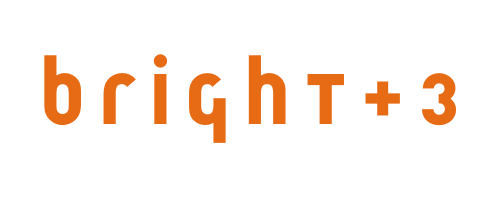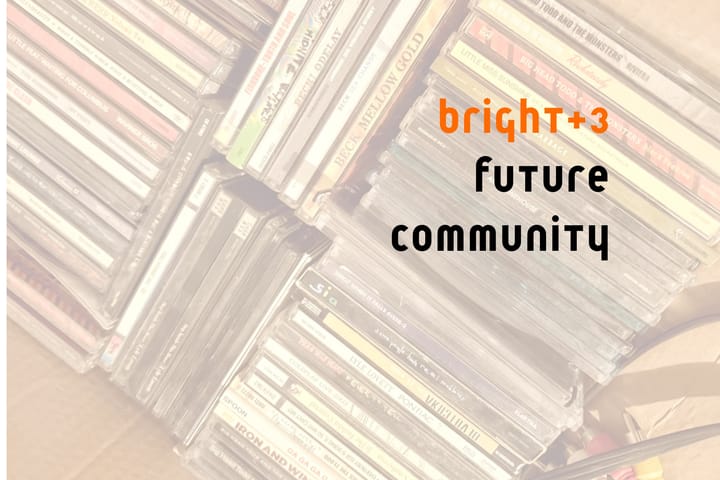Nonprofit newsletter growth strategies
A guide for nonprofits who need to understand newsletter growth goals and options.

🔥 Newsletters seem to be red hot🔥
The daily news update 1440 has over 4 million subscribers. 6AM City has expanded its city-based newsletter to 31 cities. The New York Times is running 70+ newsletters. Substack has at least 35 million subscribers across an untold number of newsletters. Newsletter hosting company Beehiiv recently reported hosting over 75,000 newsletters that are reaching over 350 million unique readers.
It would appear that people are willing to subscribe to, and even pay for, emails that consistently provide words and pictures and charts that are entertaining and/or useful.
Nonprofit newsletters are another story. Nonprofits have unique challenges.
They don't see themselves as news or even content creators, though many are creating a lot of content for blogs, social media, podcasts, case studies, and other emails.
Nonprofits are familiar with email list growth and even segmentation and personalization to improve engagement rates and fundraising. But nonprofits have typically had a single list approach to growth and single product approach to email. Larger organizations with ad budgets have invested in email growth collaborations with sites that run petitions or promote content downloads that will add emails to a list.
Organizations building or testing newsletters are often unfamiliar with how to approach growth or even understand what a good newsletter size could be.
Finding newsletter growth strategies that fit
Don't just jump into a list of tactics. Let's first understand your needs and goals, resources, and the type of newsletter and audience you're building. All of this clarifies not just options but what could work best now.
- Understand the type of newsletter you’re running.
- Clarify your goals and needs so that you can identify your growth categories.
- Review ways to grow based on your goals, newsletter type, and budget.
- Growth doesn’t happen without action. Set up systems to support growth methods, whatever they are. Inbox Collective identified what they call four newsletter growth quadrants. You could also look at these as buckets or circles because they often overlap or flow and leak from one quadrant to another.
Whatever you call it, this is a thorough rubric that will feel familiar to a lot of nonprofit comms, digital and marketing folks.
The growth types or quadrants include:
Owned Growth: using your existing properties (websites) and products (other email programs, texts, reports) to increase newsletter awareness and signups.
Earned Growth: unpaid mentions of your newsletter in channels you don’t own. This could be interviews and appearances on podcasts, mentions or cross-promos in other newsletters, and recommendations and referrals from other newsletters.
Algorithmic Growth: any unpaid use of channels (social platforms, mostly) that use an algorithm to display content. This is similar to owned growth but, because of an algorithm, you have far less control over how and when content will display and who will get to see it.
Paid Growth: includes spending money on social media ads and promotions, search ads, and buying ads in other newsletters, including networks like Sparkloop. I’d throw paid cross-promotions like petition sites, a common nonprofit email growth tactic, into this bucket.
Let’s walk through this.
What kind of newsletter are you running here?
It helps to be clear about newsletter type and goals before you talk about growth. This is the only way to peel back the layer labeled “everyone” that is usually obscuring the view of your newsletter audience.
I wrote 32 types of newsletters to provide examples of different newsletters. The list was a little tongue in cheek. “The newsletter that you’re low key excited to get because it’s interesting, fun to read and feels like you’re talking with the writer” probably isn’t an official newsletter type.
But if your newsletter is personality driven and aiming to make a strong connection with readers then you have opportunities for word of mouth and referrals from readers. The lead writer or figurehead can talk about the newsletter in interviews and podcasts.
And if the newsletter is content and personality driven then your audience is people who already have or will be able to connect with that person and their stories. They are or want to be “insiders” to the knowledge and work of that person and their network.
Either that or the stories are simply compelling for a certain audience of people who are also able to invest time with them.
From newsletter type to growth type
Here are some common nonprofit newsletters types:
- An aggregation of what we’ve posted and done recently.
- Feature about a person, place, issue. This is often a deep dive with original content.
- Put the leader out front with their thoughts, interviews, ideas.
- What we’re seeing out there - an aggregation and interpretation of what’s going on with an issue or in a place, sector or knowledge space.
- A compilation of how tos, schedules, and events. These could be for volunteers, activists, people in a city or shared place.
It can be hard to think clearly or creatively about growth options when we boil newsletter types down to the type of content in them (though content is relevant to audience and growth).
Instead, we can think about who these newsletters engage.
Some engage existing subscribers or supporters.
These include updates on what you’ve been doing, events coming up, or insights from your leader or team.
The goal here is to get (and keep) people more involved, take more actions, and give more money.
You grow this newsletter by targeting your existing subscribers, site visitors and others familiar with you and your work. You raise the visibility of the newsletter on your site, in articles and blog posts, and in your other communications channels.
A lot of organizations will simply send these newsletters to every email address on their list. Sending a newsletter to people who didn't ask for it can be a degrowth strategy that damages deliverability and engagement.
Other newsletters focus on people in a certain place or with a certain interest.
These newsletters will have a similar start to their growth. They can focus on organic growth from your existing content and email list.
But you can also optimize for search visitors. If you’re starting a newsletter focused on your New York state work then look at where people from or searching for New York state content are going and ensure they see newsletter options.
Places and interests lend themselves to paid search and social advertising because you can target places and activities. You can also collaborate with other newsletters, organizations, podcasters, creators and news organizations who focus on places and interests.
Newsletters have name brand creators, storytellers, or thought leaders.
These newsletters live in the world of ideas and influence. Make it easy (even desirable) for readers to use word of mouth and referrals to find other people. There’s a reason podcast hosts are forever asking you to give them five stars on Apple, Spotify or your favorite podcasting app. Social proof matters and people are more likely to respond to requests from a person, like a host or a writer, than a faceless organization pushing out general interest newsletters.
Other questions that shape growth strategy
Another set of questions are what resources you bring to the table. If you don't have money for advertising then you shouldn't start with paid growth.
Do you have money to spend?
Just because you do have money doesn’t mean you should or need to spend it. But you have a different set of options if you do/don’t have money to spend on ads)
Do you have an existing audience or list?
A big list isn't necessarily an engaged list. And small can be mighty. Either way, it helps to know what kind of reach and enthusiasm you already have at your disposal.
- Do you have a big and active email list or social audience.
- Is the list small?
- Is the list engaged, active, current, or largely disengaged?
What are your existing content assets?
Organic growth in particular relies on existing content. And your ability to produce newsletter content will guide the pace of growth that's needed and possible.
- Website, social content, audio, video, visuals.
- how often is content updated?
- What resources do you have for content creation, marketing, developing and managing ad content?
How do you define impact success?
Does success count on large numbers of readers taking action? Or do you need to reach a specific set of people?
- reaching new people
- people taking an action
- people referring others
- people attending events
- increasing trust / support among external leaders
- increasing knowledge / awareness
- people engaging in community / your issue outside your organization
How do you define financial success for this newsletter?
Be realistic about whether or not a newsletter needs to pay for itself and/or increase revenue. I like to say that having a financial metric can drive smarter growth decisions. But not every audience that matters to a nonprofit is going to pay for content or turn into donors. And that's okay.
- does it need to raise money, pay for itself, etc.?
- does it need to find donors / increase donations in some way?
- is it paid for through other means? Grants, general funds, etc.
- Is it a lead magnet for other fundraising efforts?
- people paying to subscribe (or become a member)
Growth systems and tactics
I think what you’ll see is that there are plenty of ways to grow your newsletter. Nonprofits often overlook organic and earned growth because they're used to "paying for emails" or because they need to grow fast.
This leads us to thinking that newsletters need fast and big growth and that means money. But if we can be clear about what we need from a newsletter audience (and who that audience is) we can hone in on organic growth and what kinds of earned growth partnerships are possible.
Some tactics work better for some types of newsletters. And you need to match growth strategy with not just your budget but the goals and needs of your newsletter. And newsletters have different phases of life. You might build from within first by optimizing organic growth from subscribers and site visitors. The revenue from that (or just the testing and improvement) could set you up for paid ads and referrals.
Ideally, you can build a growth strategy that’s resilient, nimble, and doesn’t rely on a single source. This way you can always be working on improving your organic growth and testing collaborations, referrals and paid programs. If one growth channel is fading (a social network or search advertising, for instance) then you can shift gears in earned or organic opportunities.
Inbox Collective provides plenty of sample growth tactics across these sectors in 52 ways to grow your newsletter list. It's a good place to get ideas.


